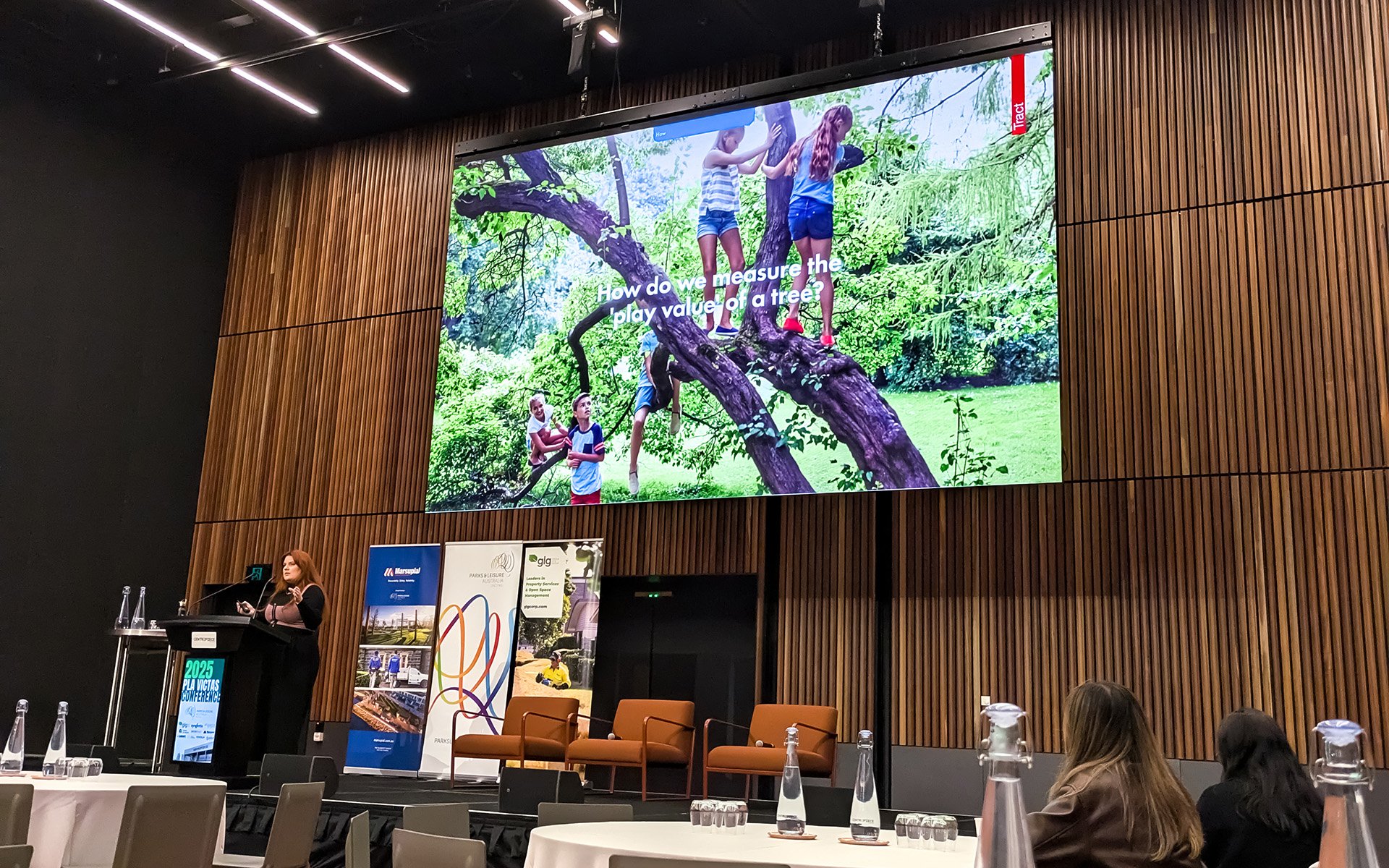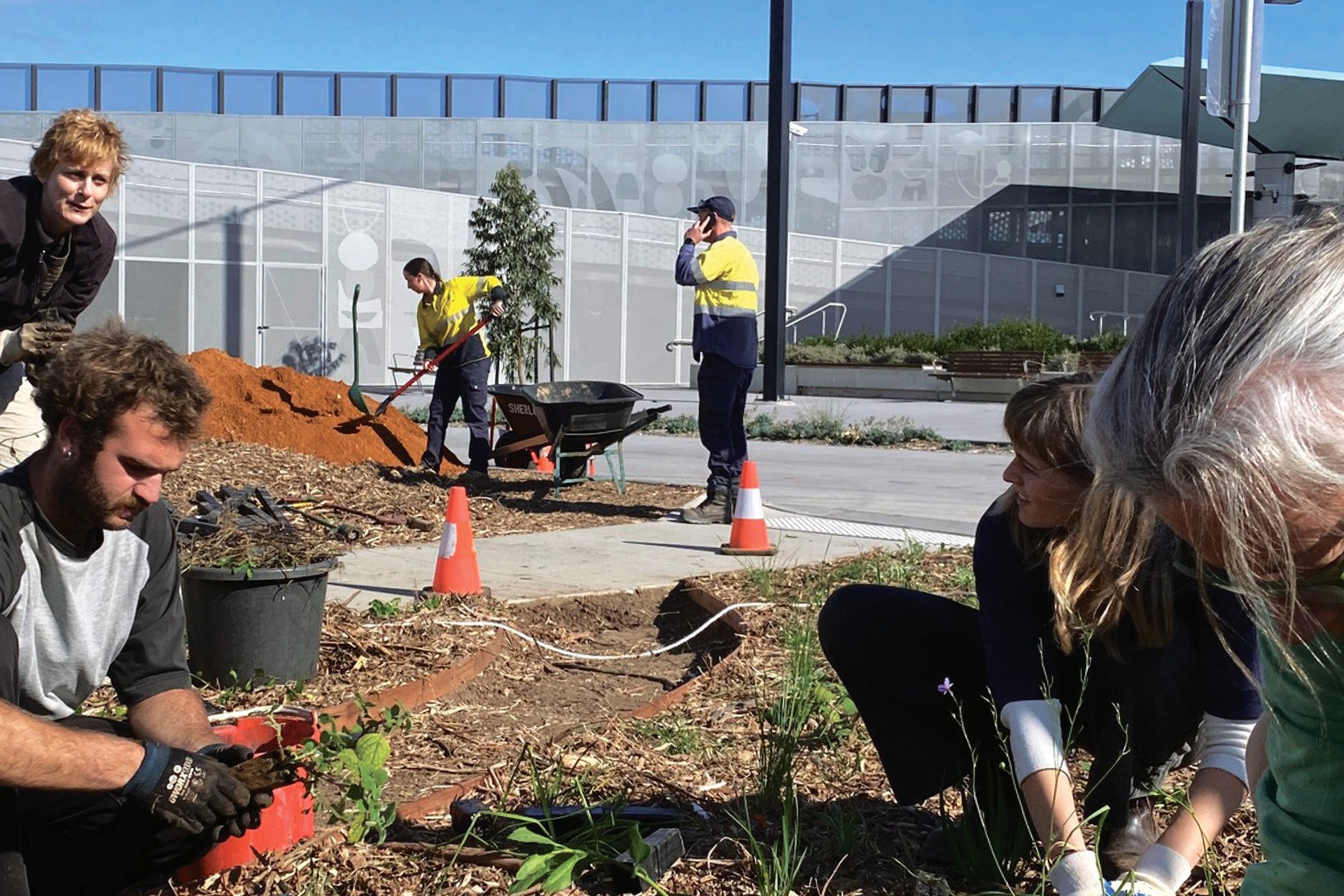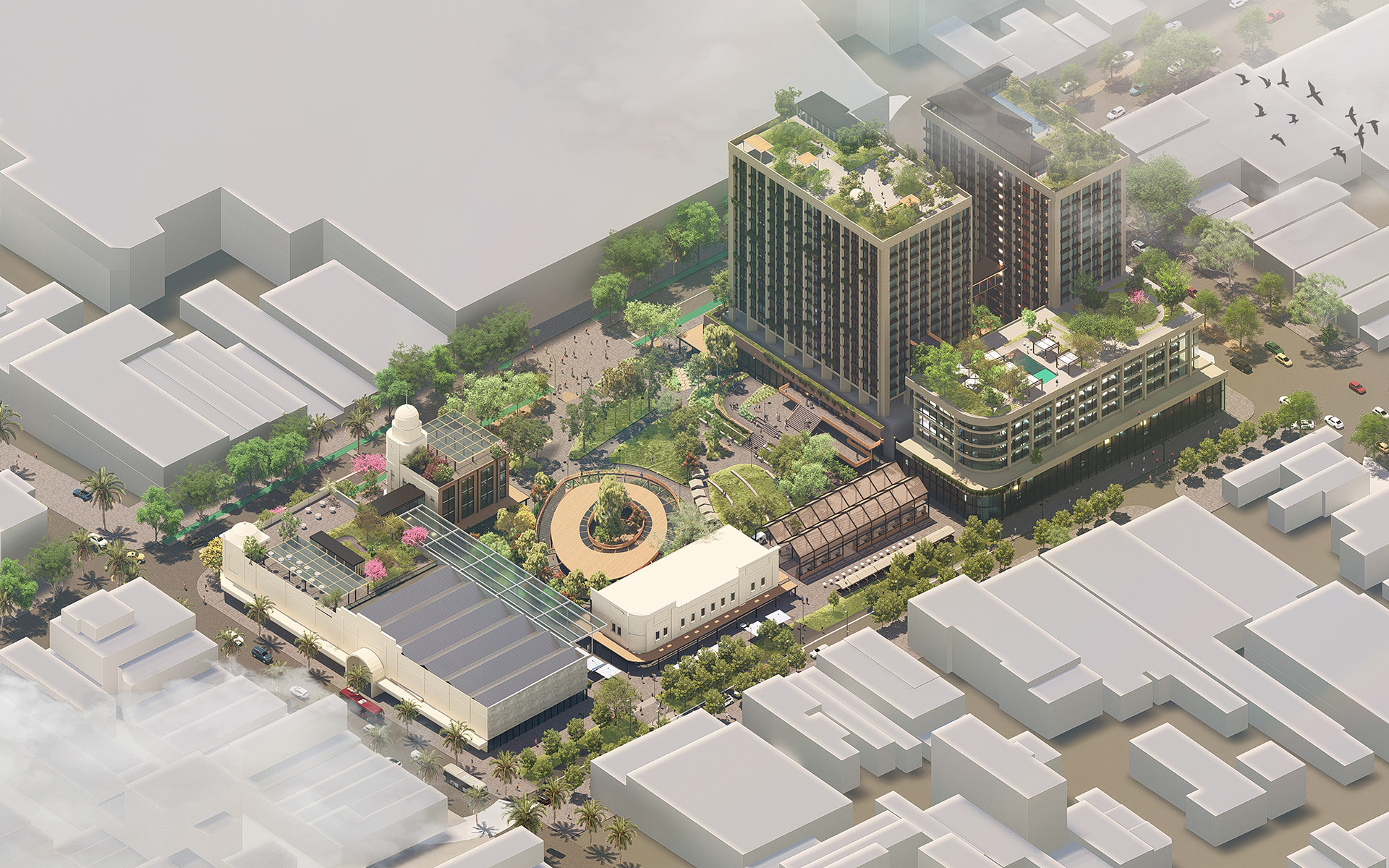Reading
In the most recent wave of planning reform announcements, we have now received Plan for Victoria, and the Suburban Rail Loop East Draft Structure Plans have been released for review prior to consultation later this month.
As we continue to provide coverage of the suite of reform announcements, we have prepared a comprehensive summary below to keep you informed and up to date with what the changes mean, and what to expect next.
Plan for Victoria
Plan for Victoria (PfV) was released in the first week of March, and is now the guiding strategy for the development of housing, transport infrastructure and employment land for both Melbourne and the regions (replacing Plan Melbourne: 2017 – 2050).
The development of PfV is a key tenet of the Victorian Housing Statement – September 2023 (the ‘Housing Statement’) which sought the creation of one document to address land use planning across the State, noting that Plan Melbourne and its predecessors were limited to metropolitan Melbourne.
Built on five key pillars, PfV ties together many of the Government’s recently announced planning initiatives, including the Activity Centre Program and Local Government Housing Targets, into an overarching strategic framework and action plan.
The five key pillars outlined within PfV are:
- Pillar 1: Housing for all Victorians
- Pillar 2: Accessible Jobs and Services
- Pillar 3: Great Places, Suburbs and Towns
- Pillar 4: Sustainable Environments
- Pillar 5: Self Determination and caring for Country
Each of these pillars are supported by a series of actions, which detail short term milestones, expected outcomes, delivery responsibility and implementation measures.
Large scale growth is envisioned for the regions and their inclusion within the plan ensures that this can be coordinated across different regions and with corresponding changes in metropolitan Melbourne. Whilst realising these visions requires more than a plan, and will need to be supported by continued investment in regional infrastructure to ensure that this can be achieved, PfV is an important and well-resolved first step.
The release of PfV capitalises on the groundswell of planning reform that is currently underway, and with some of these actions already in progress, there will be some quick wins contributing to a sense that PfV is more dynamic and impactful than past plans. Having said this, with the plan largely focussing on short-term actions, we would welcome some more specific timeframes being included as well as further clarity on the medium and longer term actions that are being considered.
Envisioned as a ‘living plan’, PfV will be subject to ongoing review and updates to respond to changes in anticipated socio-demographic and development patterns. This is an admirable goal and a very unique approach for government (and indeed for the broader industry), and we are keen to see it succeed.
We have provided a summary and commentary below on the key pillars, as well as some of the corresponding actions.
Pillar 1: Housing for all Victorians
At the centre of PfV is the objective to build 2.24 million homes across Melbourne and Victoria’s regional cities and towns over the next 30 years. The Housing for all Victorians pillar focuses on supporting housing diversity and affordability.
The Activity Centre Program and Housing Capacity Targets initiatives both fall under this pillar.
The Housing Targets are a positive step towards achieving Victoria’s housing goals and assist in providing greater certainty as to where significant housing growth is expected. We note that some of this work has already been undertaken by the State Government in formally identifying Activity Centres and key precincts (see SRL announcement below) in conjunction with a suite of planning reforms to support additional housing growth.
It is noted that whilst the Housing Capacity Targets include regional areas, specific clarification around the Victorian Planning Authority’s 10-year Precinct Structure Planning work program would be welcome.
To effectively implement the housing targets more broadly, each council is expected to review its planning scheme with updated policy guidance. This process is being supported by tools provided by the State Government which councils can use to help identify appropriate locations for housing growth in their municipality.
Further detail should be provided as to the nature and extent of these tools, as it is critical that sufficient resources and support is provided to local governments in undertaking this task, to ensure this work does not divert important council resources from other critical planning tasks.
In addition to the Activity Centres Program and associated Housing Capacity Targets, PfV identifies additional related actions that are of interest, including:
- Implementing boundaries to manage the outward growth of regional cities and towns.
- This is in line with existing policy direction which has seen the establishment of Township Boundaries and Distinctive Areas and Landscapes. It will require additional resourcing from local councils to prepare the required strategic work.
- Amending Clause 52.06 Car Parking to better match car and bicycle parking requirements to the type and location of new dwellings, creating a mix of minimum and maximum car parking requirements depending on a property’s public transport accessibility level (PTAL).
- This is a welcome change that will reduce the cost associated with infill development in close proximity to public transport and ensure new higher density housing does not further entrench car dependency.
- Further investigating how the Planning and Environment Act 1987 (the ‘Act’) can support the delivery of social and affordable housing.
- The provision of social housing stock in Victoria is low and we appreciate that efforts have been made in recent years to increase the level of government funded social and affordable housing. (such as through the Big Housing Build).
- The previous proposal for a development levy was controversial and will continue to be, given the current economic challenges around project viability.
- The State Government will need to develop a careful strategy which incentivises the delivery of social and affordable housing as part of private development, without compromising the ability to deliver private housing in line with the Housing Capacity Targets.
Further information regarding the Activity Centres Program and Housing Capacity Targets can be found in our previous article.
Pillar 2: Accessible Jobs and Services
Building on Victoria’s Economic Growth Statement, which was released at the end of 2024, this pillar identifies key actions relating to the delivery of more jobs and services closer to homes, the continued transition to renewable energy and the safeguarding of Victoria’s critical mineral resources.
Fundamental to this is the delivery of the Metro Tunnel and Suburban Rail Loop (SRL) which are established in the document as the key infrastructure projects that unlock land for new housing and job opportunities across metropolitan Melbourne.
At a regional level, PfV emphasises the need for freight rail connections between regional cities and towns, as well as Melbourne, and identifies regional employment projects and proposed strategic extractive resource areas.
Beyond the delivery of these infrastructure projects, PfV outlines several actions which aim to further strengthen access to jobs and services, including:
- Amending the Victorian Planning Provisions to include a renewed focus on improving bus networks and other public transport improvements, as well as protecting land required for future infrastructure through updated planning controls.
- The desire for homes to be within 400m of public transport has now been revised to an 800m radius, focusing on frequent and reliable services rather than more infrequent services with higher levels of coverage.
- Whilst support for these projects is to be referenced at Clause 18 Transport of the Planning Scheme, we would welcome further detail as to how these projects will be identified when there is no overarching integrated transport plan that outlines required infrastructure (as required by the Transport Integration Act 2010).
- Streamlining community infrastructure development contributions by reviewing the current model for infrastructure contributions and amending the Act.
- This aligns with the current work to develop a revised contribution model for the 60 Activity Centres and is due for implementation in early 2027 (after the 2026 Victorian State election).
- While this initiative is welcome, it is noted that the amendment of the Act is a longer-term proposition. This is a challenge for the development industry, who require costs of development upfront to understand the viability of their projects.
While PfV outlines several planning objectives that will help to facilitate the objectives of this pillar, it is noted that it will rely heavily on collaboration with the Department of Treasury and Finance (DTF) and the Department of Jobs, Skills, Industry and Regions (DJSIR), as they implement initiatives outlined within the Economic Growth Statement.
Pillar 3: Great Places, Suburbs and Towns
PfV recognises that the development of new homes and creation of employment land will need to be complemented by community infrastructure, accessible open spaces and walkable and cyclable streets. This pillar also focuses on enhancing safety and wellbeing through urban design and ensuring that places are safe and inclusive for all people.
A relevant action of interest under this pillar includes protecting canopy trees through introducing a statewide planning control for tree removal. We understand that DTP has been working on this for some time. This will need to balance the desire to increase canopy tree coverage whilst not unreasonably restricting the intensity of development that is being sought under Pillars 1 and 2.
Pillar 4: Sustainable Environments
Climate-resilient urban planning is the key focus of this pillar with strategies relating to the protection of natural habitats, energy efficient design in new homes, investment in renewable energy and sustainable agriculture.
Key actions associated with this pillar include:
- Improving the environmental sustainability of new development by amending the Planning Policy Framework and including a state-wide ESD policy. We understand DTP has been working on this for some time.
- Communicating and managing flood, bushfire and climate hazard risks. While there is limited detail beyond the intention to publish ongoing data and guidance, it is likely that existing planning provisions will be updated to further restrict the development of housing in hazardous locations where there is a risk to human life.
- Recognising the Birrarung (Yarra River) as a living natural entity in line with the Burndap Birrarung Burndap Umarkoo (Yarra Strategic Plan). This direction is reminiscent of similar policy changes around the world including New Zealand, the United States and Canada who have enhanced protection of their culturally significant waterways.
Tract and OneMap have recently developed the Climate Resilience Index, which we believe can play an important role in identifying and working through challenges associated with the climate emergency, and balancing liveability, climate and biodiversity considerations alongside urban intensification.
Click here to find out more and explore the Climate Resilience Index:
Pillar 5: Self-Determination and caring for Country
The rights and obligations that Traditional Owners have to speak and make decisions for their Country are a key focus of PfV, and while this focus sits within the fifth pillar, its actions are evident throughout the document – with connections to each of the four preceding pillars. This is a welcome addition to the State’s guiding planning document and ensures that the principles of self-determination are embedded within key planning decisions.
The following actions are of particular interest:
- Amending the Victorian Planning Provisions to ensure that where the Government has returned land to Traditional Owners for a specific purpose, the underlying planning controls do not prohibit this use.
- Updating the Urban Design Guidelines for Victoria to embed Traditional Owners knowledge in the built environment.
To find out more and access Plan for Victoria, visit the link below:
Draft Suburban Rail Loop (SRL) East Structure Plans
The Draft Structure Plans for the six Suburban Rail Loop (SRL) East Precincts were released on 3 March 2025. These precincts are Cheltenham, Clayton, Monash, Glen Waverley, Burwood and Box Hill. This release followed the recent gazettal of the new Precinct Zone (PRZ) which will be applied to the SRL East Precincts. It is not known if it will be applied to other declared precincts such as (but not limited to) Arden, Docklands and Fishermans Bend.
Whilst the PRZ has been gazetted, the planning controls that will apply to each precinct and give effect to the Structure Plans will be set out in a Schedule to the zone. Draft Schedules will be released for public consultation on 17 March 2025, with the State Government seeking to have the controls finalised and gazetted in 2026 (prior to the November 2026 elections).
In the interim, the Draft Structure Plans provide a strong indication of the built form controls that will be applied, with each plan identifying a series of ‘neighbourhoods’ and outlining how built form, land use, movement, public realm and open space will evolve across the precincts.
This includes setting out (inter alia):
- Preferred land use profiles.
- Building heights and street wall heights.
- Front, side and rear setbacks.
- Designation of pedestrian priority routes and new pedestrian links to be provided.
- New public open space areas.
The background documents which underpin the development of these plans have also been released and demonstrate the rigour that has gone in to developing the plans and the draft planning controls.
Whilst the Draft Structure Plans provide a guide as to what to expect from future planning controls, these final controls will need to be reviewed before a fulsome consideration of the implications on any specific landholding can be considered.
The draft planning controls (to be released on 17 March) will further refine the proposed land use and built form controls and clarify whether controls are proposed as mandatory or discretionary (able to be varied).
Public consultation on the Draft Structure Plans and Draft Planning Controls will run from 17 March to 22 April.
To find out more and view the draft precinct plans, visit the Big Build website.
How can Tract assist?
We would be happy to provide specific advice on how these changes could impact your landholdings. Please get in touch with your existing Tract contact to arrange a meeting, or contact us via the link below.






